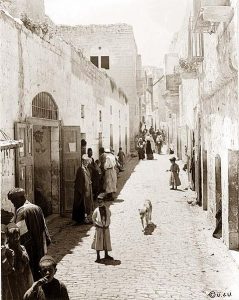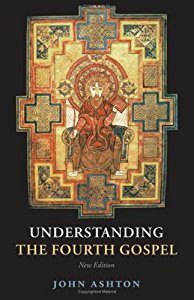
Continued from Responding to standard arguments for Jesus’ historicity (1)
.
.
(ii) he was from Nazareth
. . . . Not only is the fact that he was from Nazareth a feature of all versions of the stories but Nazareth itself appears, with Jesus being scorned and rejected there. This was clearly a problem for the gospel writers, because the Jewish expectation was that the Messiah was going to come from Bethlehem. So the writers of Matthew and Luke both tell stories to “explain” how a man who was known to be and who was depicted as being from Nazareth could actually have been born in Bethlehem. The problem is (i) their stories are riddled with historical problems that show they are inventions and (ii) they don’t just totally contradict each other, they are set ten years apart and are mutually exclusive.
Again, this all makes perfect sense if he did exist and he was from Nazareth. They would need to “explain” how someone from a tiny, insignificant village in Galilee could actually have fulfilled the prophecy about Bethlehem. But it makes no sense at all if he was an invention or myth. If that is the case, why is Nazareth in the story at all? The only logical explanation is that it’s there because that is where he was from.
Coached witnesses are not multiple witnesses
Also featuring in “all versions of the stories” is the ability of Jesus to produce 12 baskets of food scraps after feeding 5000 with a few fish and loaves; and a resurrected person leaving a tomb. So we can see the relevance of a “fact” appearing in all four gospels. Even though scholars are very aware of at least Matthew and Luke being dependent on Mark as a source, and some also believe John to be derivative from Mark, too, they are not beyond the tendentious assertion that this or that detail is found in “all four witnesses”.
(But there is in fact reason to doubt that Nazareth does appear in all gospels, at least in their original versions. Nazareth is found in only one verse in Mark’s gospel. The Gospel of Matthew copies most of the text of the Gospel of Mark, sometimes adding new material to it. The author of Matthew’s gospel also copied Mark’s scene of Jesus coming to be baptized by John. However, the word “Nazareth” in Mark’s gospel does not appear in the copied verse of Matthew’s gospel. This suggests it was not there in the version of Mark’s gospel that was known to the author of Matthew’s.)
Self-testimony can never be enough
A narrative cannot testify to its own historicity. External controls are always needed. No-one can pick up a story and, without any idea of its context, decide if it is a true tale or not. The mere fact that a story has a coherent plot is no more a verification of its historicity than if it is told less coherently.
To accept as “true” any document or text on the basis of its self-testimony alone, without any reference to external context, is simply naive. Valid historical method does not work that way.
Awkward facts or circular reasoning?
It is said that Nazareth is one element in the gospel narrative that is “clearly awkward for the gospel writers”. I don’t see any awkwardness about its mention at all. It seems no more awkward than the mention of any other place: Capernaum, where Jesus preached; Bethany, where Jesus stayed by night while preaching in Jerusalem by day; Tyre, when he left Galilee altogether at one point. The awkwardness seems to be in the minds of modern readers who seem to be able to read the minds of the ancient authors and psychically see them somehow struggling over how to write about this particular place. Or maybe it is simply a matter of plain old circular reasoning: awkwardness in the narrative is presumed because we “know” in advance it was an awkward matter facing the authors.
I am sure most lay Christians would be surprised to learn that their beloved nativity stories had “problems” with these two places. They are anchors of a beautiful and dramatic simple story told and reenacted every Christmas.
The awkwardness is seen by the apparent “fact” that Nazareth does not fit the Jewish expectation that the Messiah was to come from Bethlehem. There is simply no evidence that there ever was such an expectation. Yet there is evidence against it. This “fact” is nothing more than a backward projection by later Christians.
The myth of the general Jewish messianic expectation
In my earlier post I cited discussions in Fitzmyer and Thompson (historians of the Messiah concept at this time) and noted their lack of support for the common assertion that Jews were generally expecting a Messiah at this time, least of all one from Bethlehem. Yes, I have read Horsley’s bandits etc. and the rest. We can cheat a bit and superimpose messianic notions on some of these, but not one has the slightest hint of a whisper about a “general expectation”, let alone a Bethlehem birth.
The narrative contradicts this common assumption
The author of Matthew’s gospel writes a narrative that contradicts the assumption that there was any such Jewish expectation. The wise men were not very wise or knowledgeable at all if they were not aware of what every Jew was supposed to have believed — that the Messiah was to be born in Bethlehem. In Matthew’s narrative they have to go to the royal court to ask the King to consult the wisest of the wise to decipher and deliver this information. Not even the King of the Jews, Herod, knew of it.
And his Jewish attendants didn’t stop to tell him not to bother the priests, because everyone in town knew the answer to that one. Word got around that the magi were looking for a baby messiah and “all Jerusalem was troubled”. They didn’t all flock to Bethlehem, as would have been expected had they all expected that would be the place of the Messiah’s birth.
Herod had to ask his wise men to find the answer. It could hardly, then, be said to have been an expectation in the heart of every Jew.
Matt.2:1-4
Now when Jesus was born in Bethlehem of Judaea in the days of Herod the king, behold, there came wise men from the east to Jerusalem, Saying, Where is he that is born King of the Jews? for we have seen his star in the east, and are come to worship him. When Herod the king had heard these things, he was troubled, and all Jerusalem with him. And when he had gathered all the chief priests and scribes of the people together, he demanded of them where Christ should be born.
Of course this has all the ring of a fairy story. But if we are to interpret this as some late development of a historical core, then we are reading how astrologers are unable to learn from general public knowledge about the place of the Messiah’s birth, and how they must resort to a special audience with the king. What’s more, we then read that that King had to shrug his shoulders and say he hadn’t a clue. He had to call in his wise men and pose the question to them.
The so-called prophecy in Micah that the Messiah was to be born in Bethlehem was invented by the author of Matthew’s gospel to fit his narrative. The original passage in Micah 5:2 certainly meant no such thing to its original Jewish audience. It refers, rather, to a clan or individual named Bethlehem, a son of Ephratha. (1 Chron 4:4). It is one of many similar prophecies about a future Davidic king coming from the tribe of Judah (c.f. 1 Sam.17:12).

So rather than being perplexed over how to reconcile apparent facts with beliefs, the author of Matthew’s gospel actually manufactured the “belief” that was supposed to have caused him so much difficulty!
The gospel of Matthew’s author himself was the one who twisted the meaning of a verse that originally referred to personal or clan names and forced it to mean, instead, the town of Bethlehem. He wanted from the beginning to create a Bethlehem story. He was not “forced into it” so that he then had somehow to struggle to reconcile it with his Nazareth account.
Literary contortions or routine visions and travels?
It is also usually claimed that the authors of Matthew and Luke go to contorted or contrived lengths in their narratives to find ways to get Jesus from a birth in Bethlehem to his hometown in Nazareth. Again, I find such a claim to be without any foundation at all. Both authors use the simple and easy techniques used throughout the Old Testament narratives. It was never a problem for God to get Abraham, Isaac, Jacob, or the millions of the tribes of Israel in Sinai from one place to another. Tossing in visions, dreams, sending a plague or curse of some kind in one place, and offering a carrot somewhere else — all these techniques were familiar enough and are repeated routinely in the Matthew and Luke narratives that move Jesus from Bethlehem to Nazareth. Awkwardness again? Not at all.
If that is the case, why is Nazareth in the story at all? The only logical explanation is . . . .
Continue reading “Response (2): the Bethlehem-Nazareth fallacies”

 One of the more absorbing books I caught up with about a year ago is
One of the more absorbing books I caught up with about a year ago is